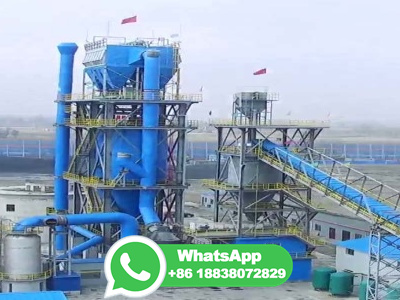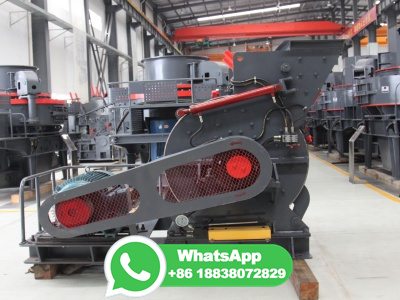
The whole lime production line includes: mining, crushing, screening and calcinating. Mining highquality limestone First, limestone is quarried from mines with the help of big machines and blasting. In this stage, limestone with big blocks which are not suitable for putting in a kiln.
WhatsApp: +86 18838072829
Tufa Uses of Limestone A LimestoneForming Environment: An underwater view of a coral reef system from the Kerama Islands in the East China Sea southwest of Okinawa. Here the entire seafloor is covered by a wide variety of corals which produce calcium carbonate skeletons. A United States Geological Survey image by Curt Storlazzi. ADVERTISEMENT
WhatsApp: +86 18838072829
The basic processes in the production of lime are: (1) quarrying raw limestone; (2) preparing limestone for the kilns by crushing and sizing; (3) calcining limestone; (4) processing the lime further by hydrating; and (5) miscellaneous transfer, storage, and handling operations.
WhatsApp: +86 18838072829
description of the production process for lime, with discussions of individual lime products, limestone inputs, and costs of production. Section 3 describes the characteristics, uses, and consumers of lime as well as substitution possibilities. Section 4 discusses the organization of the industry and provides facility and companylevel data.
WhatsApp: +86 18838072829
Cement Manufacturing Process Phase II: Proportioning, Blending Grinding. The raw materials from quarry are now routed in plant laboratory where, they are analyzed and proper proportioning of limestone and clay are making possible before the beginning of grinding. Generally, limestone is 80% and remaining 20% is the clay.
WhatsApp: +86 18838072829
Researchers at The University of Alabama in Huntsville (UAH) have created a new kind of triboelectric nanogenerator (TENG) that produces electricity through the use of limestone putty, promising ...
WhatsApp: +86 18838072829
Limestone also helps to improve the handling and formability of the molten glass. In a pure silica melt, viscosity is high and this (alongside with high temperature) makes the glass difficult to shape, especially when it needs to hold a form, for example, in the production of glass containers. Limestone reduces the viscosity, making the liquid ...
WhatsApp: +86 18838072829
These algaegrown limestone have a negative carbon footprint, because algae absorb CO2 during the production process. Engineers can then add this limestone to cement production to offset a quarter of its carbon emissions. "Even if the cement plants are still emitting, we're capturing the carbon somewhere else.
WhatsApp: +86 18838072829
In some lime plants, the resulting lime is reacted processes in the production of lime are: (1) crushing and sizing; (3) calcining limestone; (4) (5) miscellaneous transfer, storage, and handling manufacturing plant is given in Figure all plants. The heart of a lime plant is the kiln.
WhatsApp: +86 18838072829
Concrete is formed when portland cement creates a paste with water that binds with sand and rock to harden. Cement is manufactured through a closely controlled chemical combination of calcium, silicon, aluminum, iron and other ingredients. Common materials used to manufacture cement include limestone, shells, and chalk or marl combined with ...
WhatsApp: +86 18838072829
The production of cement releases greenhouse gas emissions both directly and indirectly: the heating of limestone releases CO 2 directly, while the burning of fossil fuels to heat the kiln indirectly results in CO 2 emissions. The direct emissions of cement occur through a chemical process called calcination.
WhatsApp: +86 18838072829
The answer is the cement industry. Limestone plays two major roles in the cement manufacturing process, one is used as a raw material for cement clinker, and the other is used as a cement admixture. Limestone is one of the key raw materials of cement clinker. Around 8090% of the raw material for the kiln feed is limestone.
WhatsApp: +86 18838072829
Cement manufacturing has several opportunities for WHR, specifically in the process step where the clinker material is produced. For clinker production, a mixture of clay, limestone, and sand is heated to temperatures near 1500°C. The kiln and clinker cooler have hot exhaust streams where waste heat could be recovered.
WhatsApp: +86 18838072829
The report also provides detailed information related to the limestone manufacturing process flow and various unit operations involved in a manufacturing plant. Furthermore, information related to mass balance and raw material requirements has also been provided in the report with a list of necessary quality assurance criteria and technical tests.
WhatsApp: +86 18838072829
Cement Manufacturing Process. CaO SiO 2 Al 2 O 3 Fe 2 O 3 MgO Loss Limestone (chalk) ... Limestone decomposition Formation of initial compounds Initial formation of C 2 S Formation of melt Formation of C 3 S The kiln exit gas temperature will depend on the process. Sintering.
WhatsApp: +86 18838072829
Similar to cement, lime is mainly produced via the heating of limestone (CaCO 3) in a kiln at temperatures of 900 ±1200 C°. The CO 2 generated during this process is commonl y released into the atmosphere (Greco Coppi et al., 2021) . During limestone decomposition, fossil fuel combustion, which is used to provide energy for the
WhatsApp: +86 18838072829
When heated to temperatures of 900 to 1,000 °C (1,650 to 1,800 °F), limestones will dissociate calcium carbonate and yield carbon dioxide and lime, the latter having major applications in the manufacture of glass and in agriculture.
WhatsApp: +86 18838072829
Lime is an inorganic material composed primarily of calcium oxides and hydroxides, usually calcium oxide and/or calcium is also the name for calcium oxide which occurs as a product of coalseam fires and in altered limestone xenoliths in volcanic ejecta. The International Mineralogical Association recognizes lime as a mineral with the chemical formula of CaO.
WhatsApp: +86 18838072829
FIGURE 1. PROCESSING FLOW DIAGRAM FOR LIMESTONE QUARRYING OPERATIONS 2 FIGURE 2. PROCESS FLOW DIAGRAM FOR LIMESTONE PROCESSING OPERATIONS 3 List of Tables 6 6 TABLE 1. GROSS ENERGY TO PRODUCE ONE TON OF LIMESTONE PRODUCTS TABLE 2. WATER CONSUMPTION FOR LIMESTONE QUARRYING AND PROCESSING TABLE 3.
WhatsApp: +86 18838072829
The limestone is heated as it moves down the kiln toward the lower end. As the preheated limestone moves through the kiln, it is "calcined" into lime. The lime is discharged from the kiln into a cooler where it is used to preheat the combustion air. Lime can either be sold as is or crushed to make hydrated lime.
WhatsApp: +86 18838072829
The lime cycle shows the stages from quarrying the limestone through to the production of mortars and plasters for our buildings and how it slowly, through the reabsorption of Carbon Dioxide, reverts to its original chemical form (Calcium Carbonate) in the wall. Lime burning
WhatsApp: +86 18838072829